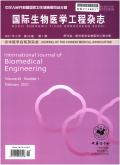Role of histone methylation enzyme EZH2 and VEGF165 in momymoya disease
引用次数: 0
Abstract
Objective To study on the role of histone methylation enzyme enhancer of zeste homolog 2 (EHZ2) and vascular endothelial growth factor 165 (VEGF165) in momymoya disease. Methods The animal model of moyamoya disease was established by ear vein injection of horse serum in New Zealand rabbits. VEGF165 was over-expressed in situ by packaging lentivirus. Real-time quantitative PCR and Western Blot were used to detect the expression of VEGF165, EZH2 and H3K27me3 in the brain tissues of the animal models. Results Compared with the normal control group, the expression levels of mRNA and protein of EZH2 in the moyamoya disease model group were increased (EZH2 mRNA: P<0.01), and the level of histone H3K27me3 was increased. After overexpression of VEGF165 in the moyamoya disease model group, the expression levels of mRNA and protein of EZH2 was further increased (EZH2 mRNA: P<0.01), and the level of histone H3K27me3 was also increased. Conclusions EZH2 plays a certain role in the pathogenesis of moyamoya disease, and the expression of EZH2 is regulated by VEGF 165, which provides a theoretical basis for the study of the pathogenesis of moyamoya disease. Key words: Moyamoya disease; Enhancer of zeste homolog 2; Vascular endothelial growth factor 165组蛋白甲基化酶EZH2和VEGF165在胸腺疾病中的作用
目的探讨zeste同源物组蛋白甲基化酶增强子2 (EHZ2)和血管内皮生长因子165 (VEGF165)在肺癌中的作用。方法采用耳静脉注射马血清法建立新西兰兔烟雾病动物模型。通过包装慢病毒原位过表达VEGF165。采用实时定量PCR和Western Blot检测VEGF165、EZH2和H3K27me3在动物模型脑组织中的表达。结果与正常对照组比较,烟雾病模型组EZH2 mRNA及蛋白表达水平升高(P<0.01),组蛋白H3K27me3表达水平升高。过表达VEGF165后,烟雾病模型组EZH2 mRNA和蛋白表达水平进一步升高(EZH2 mRNA: P<0.01),组蛋白H3K27me3水平也升高。结论EZH2在烟雾病发病中发挥一定作用,EZH2的表达受VEGF 165的调控,为烟雾病发病机制的研究提供了理论依据。关键词:烟雾病;趣味同源物2的增强剂;血管内皮生长因子165
本文章由计算机程序翻译,如有差异,请以英文原文为准。
求助全文
约1分钟内获得全文
求助全文

 求助内容:
求助内容: 应助结果提醒方式:
应助结果提醒方式:


